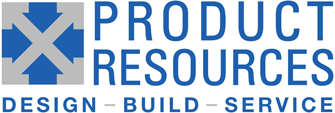We introduce our “Guide to Manufacturing Complex Products” to help you navigate the manufacturing steps that immediately follow the product design and product development process.
The product design and development process can be exciting, challenging and fulfilling.
You start with an idea, you put it down on paper, you consult with friends and colleagues, you look at potential markets and opportunities – and then you get serious.
Perhaps you write a product development plan.
You build a list of product requirements.
You study the competitive marketplace.
You calculate a few cost scenarios.
You hire a few engineers and create a first design.
You build a prototype and show it to potential customers.
You think of the potential risks that may accompany your product.
You test and retest everything you can think of.
You submit your product to a regulatory agency for approval.
You create an initial bill of materials an assembly drawing and some assembly instructions.
And then you’re done.
Your prototype is looking good. The documentation is ready. The test results are promising. The regulatory authorities have given you a thumbs up.
Your product is ready for manufacturing, right?
Well, maybe, but maybe not.
We don’t want to throw cold water on the excitement here.
We understand what you have accomplished and all the work you have put in to get this far, and you should be proud of your effort – and we congratulate you.
We look forward to working with you and being your manufacturing partner for a long time to come.
But you should know this …
Manufacturing 10, 1,000 or 10,000 units in a repeatable manner is very different from engineers building a few prototypes.
Think about it …
Your prototype was built by you and your team over many days, weeks or even months.
Much of this process was probably trial-and-error using parts that were readily available, or quick-turn prototype parts.
Your goal in building an Alpha prototype was likely to demonstrate the fundamental operation of the product. Your goal in building a Beta prototype was to show form and performance – looks-like and works-like.
You have the documentation for the design, but now that you want to shift to manufacturing higher volumes, there are several considerations.
Manufacturing is fundamentally about control of the processes needed to build the product.
To control a process, it must be defined in a way that can be measured, then it must be designed so that output of the process matches the definition and then verified to demonstrate the process remains in control.
This applies to the assembly of the product, and the procurement of the parts, document control, calibration of equipment, CAPA systems and the other processes used by manufacturers. Some of these processes are directly tied to the product and you must be able to provide the definitions of that product so that it can be built.
Other processes are systemic to manufacturing and quality processes which are in place at Product Resources to allow you to leverage our proven processes for your product.
We look forward to working with you.
